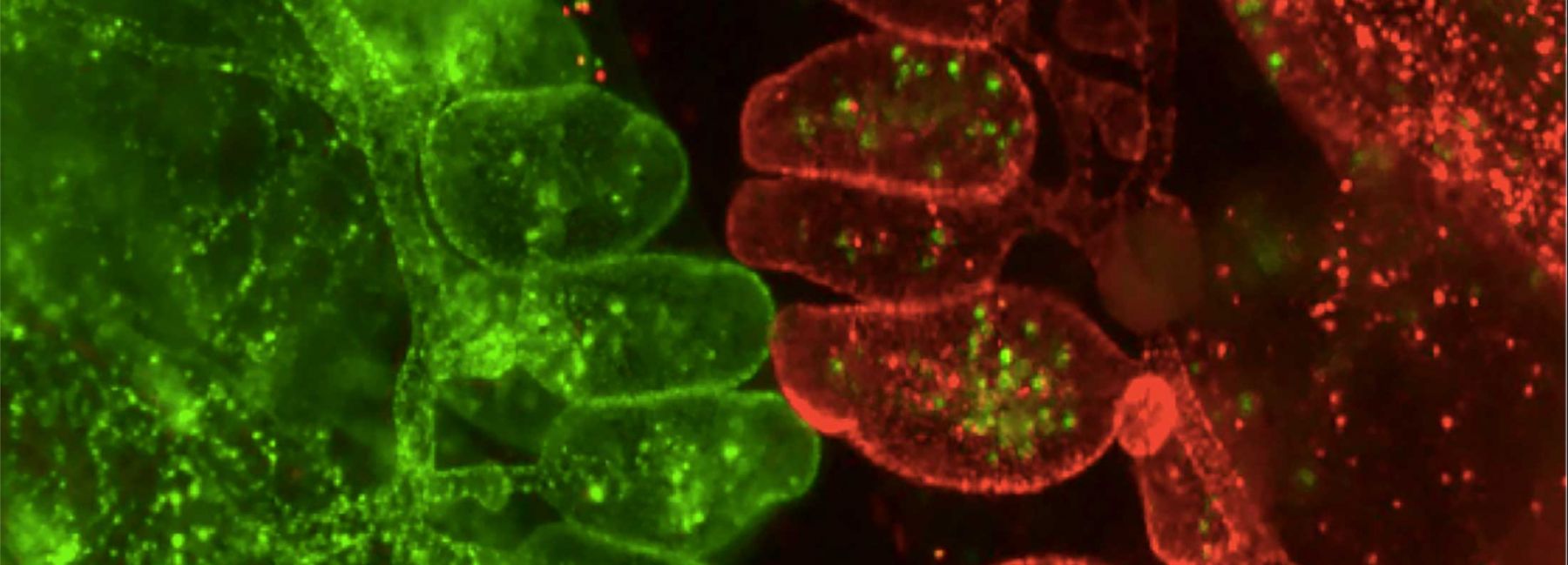Mechanotransduction & Vascular Regeneration
Botryllus has a massive extracorporeal vascular network that consists of large vessels that can be touched by hand and can encompasses areas >100cm2. It is also highly regenerative, and following surgical ablation will regenerate in < 72 hours. Over the last several years we have developed a novel vascular lineage tracing methodology and found that angiogenesis is due to proliferation of pre-existing vasculature and dependent on conserved regulatory mechanisms, including VEGF and angiopoitens/Tie2. In recent studies we found that we could utilize the unique anatomy to study the interaction of the vasculature and extracellular matrix. Using pharmacological inhibitors of the collagen crosslinking enzyme lysyl oxidase, we found that we can manipulate the stiffness of the ECM in vivo. In turn, this causes a global vascular regression phenotype that is due to apoptosis and extrusion of vascular cells from the blood vessel wall. This is a coordinated tissue level response that occurs without loss of vessel barrier function, suggesting we are manipulating normal homeostatic mechanisms on a global scale. We are currently dissecting the mechanisms which link physical changes to cellular responses, and found this is due to changes in integrin signaling. With the Valentine Lab, in the Dept. of Mechanical Engineering here at UCSB, we are also directly physically manipulating the vessels in vivo to understand how physical and biochemical signals are integrated; for example, can stretching the vessels override the loss of integrin signaling? If so, how and where are these signals integrated, i.e., is there crosstalk between adherens junctions and focal adhesions? The ability to directly manipulate and visualize the vasculature are not possible in other model organisms.
